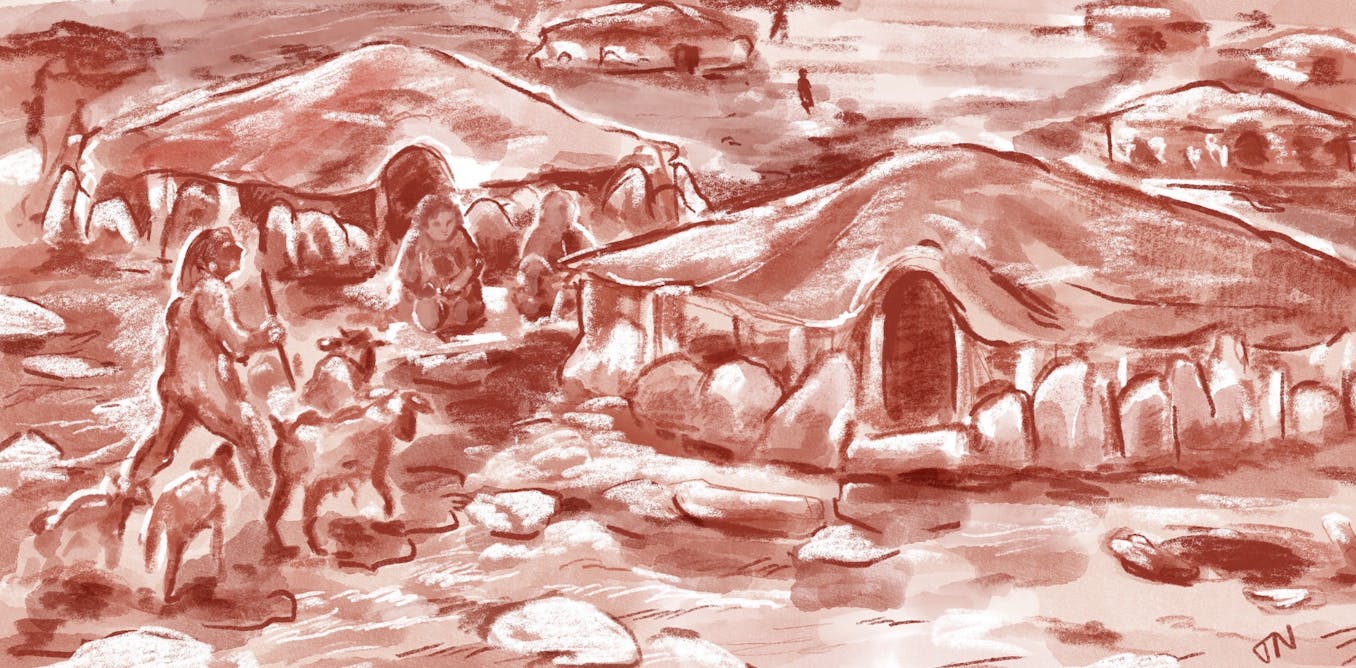To date, little has been known about people living in north-western Saudi Arabia during the Neolithic – the period traditionally defined by the shift to humans controlling food production and settling into communities with agriculture and domesticated animals.
Nomadic or mobile?
We assume these people didn’t stay in one place, since they lived in buildings that could be partially dismantled and moved. Goats and sheep also need fresh pastures and water to survive.
That said, these people spent enough time at each site to justify the time and effort required to source and manipulate basalt blocks weighing up to one tonne each. This suggests they returned to these locations time and again for hundreds of years, if not more than 1,200 years.
They left behind materials collected from near and far. While the local basalt was sufficient for everyday tools, the best materials made from chert (a tough sedimentary rock) were brought up to the Harrat Uwayrid to make fine arrowheads, drills and scrapers.
They also collected red stone to be crushed into pigment. It may have been used for rock art, or perhaps for painting bodies and hides.
Small shells were brought from the Red Sea (some 120 kilometres away) to make beads. Other objects we found included bracelets and pendants carved and polished from exotic stone.


